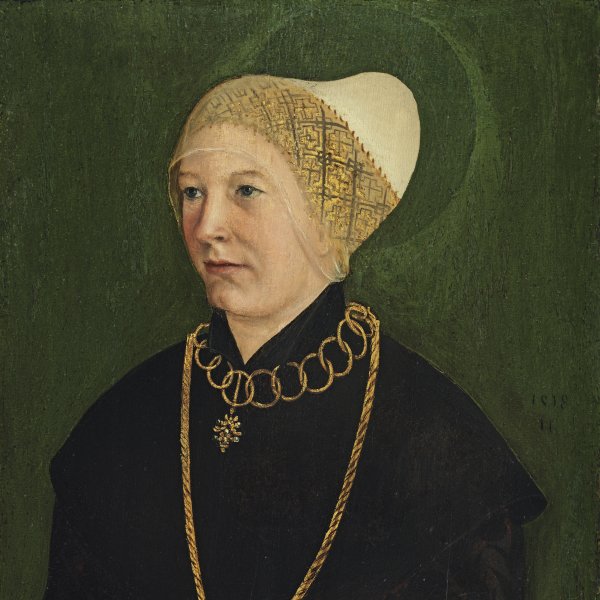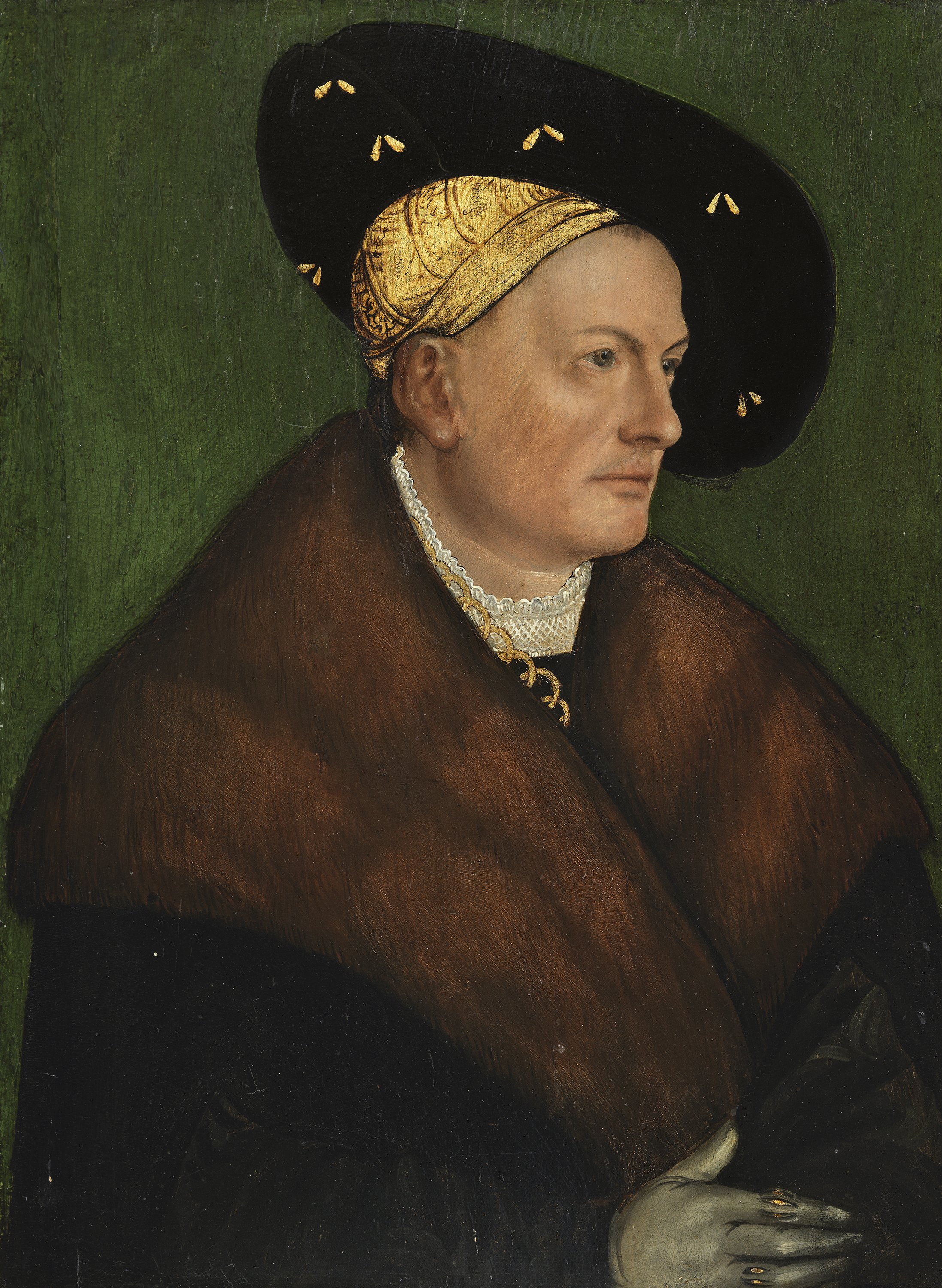Portrait of a Man (Georg Thurzo?)
This pair of portraits conforms to the traditional format used for such works, with the man on the left and the woman on the right. Their bodies are turned inwards in order to establish visual contact with each other while the green background emphasises their clothes. Although sombre in tone, the elegance of these clothes reflects the sitters’ elevated social status. The two panels are of the same size but the male figure almost entirely fills the pictorial space while the female figure is smaller and consequently leaves more of the background visible. They were formerly attributed to Hans Kulmbach, partly due to the presence of the initials and date on the right of the figures. Isolde Lübbeke, however, considered them to be by an anonymous artist. Janos Eisler identified the sitters on the basis of their relationship to three drawings by Hans Holbein the Elder in Berlin that depict Georg Thurzo, a member of a wealthy family that owned mines in northern Hungary, and his wife Portrait of a Woman (Anna Fugger?).
These two separate panels form a pair and correspond to a standard format for images of this type in which the man occupies the left side and the woman the right. Both figures turn their bodies towards the centre in order to close the composition and to establish a connection through their gazes. In this case the artist chose a striking green background against which the forms of this married couple are outlined. Their clothes are elegant and distinguished and both their accessories and the materials indicate their social status. Nonetheless, their garments are discreet and sombre in colour with a predominance of black. The paintings are executed on wooden panels of almost identical size although the man stands out more as his body with its broad shoulders occupies most of the pictorial space, wrapped in his large coat with a wide fur collar. The woman is set into a more empty pictorial space with sufficient space left on either side to reveal the background.
This pair of panels seems to have been in the collection of the Counts of Hertzberg in Düsseldorf. It was then in the collection of Sir Charles Turner in London until 1908. The portraits appeared in the Otto Held collection in Berlin where they are recorded until 1929. They were included in an exhibition held at the Paul Cassirer gallery in Berlin, while their next owner was the Goudstikker gallery in Amsterdam prior to their acquisition for the Rohoncz collection. These panels were known to art historians from the 19th century and were published in 1888 by Woltmann and Woermann.
Both panels were attributed to Hans Klumbach from the time that they entered the Collection and appear as such in the catalogues of the Collection published up to 1991. This attribution was partly indebted to the way that the initials that appear with the date at the level of the sitters’ shoulders had been understood, an interpretation questioned by Buchner. Isolde Lübbeke, who made the present attribution, did not consider them to be by Kulmbach given that they do not conform to his style. Instead, she chose to attribute them to an anonymous master who was familiar with formulas used in Augsburg and Nuremberg for portraits of this type.
The identity of the two figures was suggested by J. Eisler who compared them with three silverpoint drawings by Hans Holbein the Elder in Berlin depicting Georg Thurzo and his wife Anna Fugger. The similarity between the painting and drawing of Thurzo is evident in significant features such as the high forehead with pronounced brow, the small mouth and the long straight nose with rounded tip. Thurzo married Anna Fugger, daughter of Ulrich Fugger, in 1497. Thurzo was from a wealthy Hungarian family with interests in metal and mineral mining in northern Hungary.
Mar Borobia






